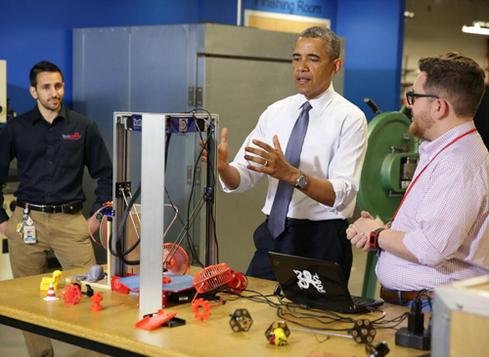5 Reasons Going Paperless Won't Work
Paperless processes have their virtues, but don't confuse the means with the ends.


White House Maker Faire: 10 Cool Inventions
White House Maker Faire: 10 Cool Inventions (Click image for larger view and slideshow.)
Technologists have been striving to go paperless for at least 30 years, but it still hasn't happened. (The idea sounded good on paper.) The reality is that, for most organizations, there are multiple places in their workflow where the analog meets the digital, and where technology still hasn't been able to replace important legacy processes.
Instead of throwing out legacy processes that are working, however, organizations would be wise to look to new solutions that include paper as an option in their digital workflows, embracing the old while ushering in the new. Here's why:
1. Paper is often still the best tool for the job.
Although a lot of our tools and systems are now digital, many of the touchpoints that businesses have with their customers and constituents remain analog. In many settings, paper will long remain the most practical choice for capturing information. In some situations, it is the only choice: paper does not break, run out of batteries, risk security breaches, or need upgrading.
2. New systems are not designed for all possible users.
A recent survey of health insurance enrollees shows that a Web-only self-service experience is not sufficient, and many still have to spend time in person or on the phone to purchase insurance. Systems that are meant for everyone must be designed for everyone, not just folks with iPads or late-model computers with high-speed Internet access. The goal should be to meet customers where they are, not ask them to change behavior that has been ingrained -- and trusted -- for decades.
[Want to be a budget guru? See Predict The Future (Without Looking Like An Idiot).]
3. Paperless is not a smart goal.
Smart IT decision makers know that evolution, not revolution, is the sensible path forward. But when it comes to paper, there has not been a reasonable evolutionary path available. The choice has felt black or white -- paper or no paper. In fact, the best solution is both/and. New technologies now make this possible, enabling a gentle, evolutionary path forward.
4. Throwing out legacy processes often results in project failure.
The VA created the Veterans Benefits Management System (VBMS) to replace paper processes. When the system fails, which is regularly, patients turn back to paper, and the legacy paper processes are burdened more than ever. Systems that incorporate both paper and digital workflows, and integrate the resulting data in one backend store, can greatly increase both organizational efficiency and customer satisfaction. Rip and replace systems, like the VBMS, often force too much change too quickly throughout the organization. The failure rate is high.
5. Lots of valuable data remains on paper.
The paperless mindset often overlooks a critical fact: vast stores of valuable information are still housed on paper. When we think of big data as only including the information we can easily access -- like Web logs and click streams -- we are missing a huge opportunity. Both commercial and public sector organizations need solutions that help them analyze paper-based data with big data tools. This view embraces data in all its forms.
The idea of "paper vs. paperless" is a false dichotomy. Data comes in both forms, and we need to think more about how to get the data we need rather than about the form it comes in. As the digital and analog worlds increasingly meld together, we need to center our thinking around "going paperless" as a means to using digital data, not an end.
New standards, new security, new architectures. The Cloud First stars are finally aligning for government IT. Read the Cloud Hits Inflection Point issue of InformationWeek Government Tech Digest today.
About the Author
You May Also Like






